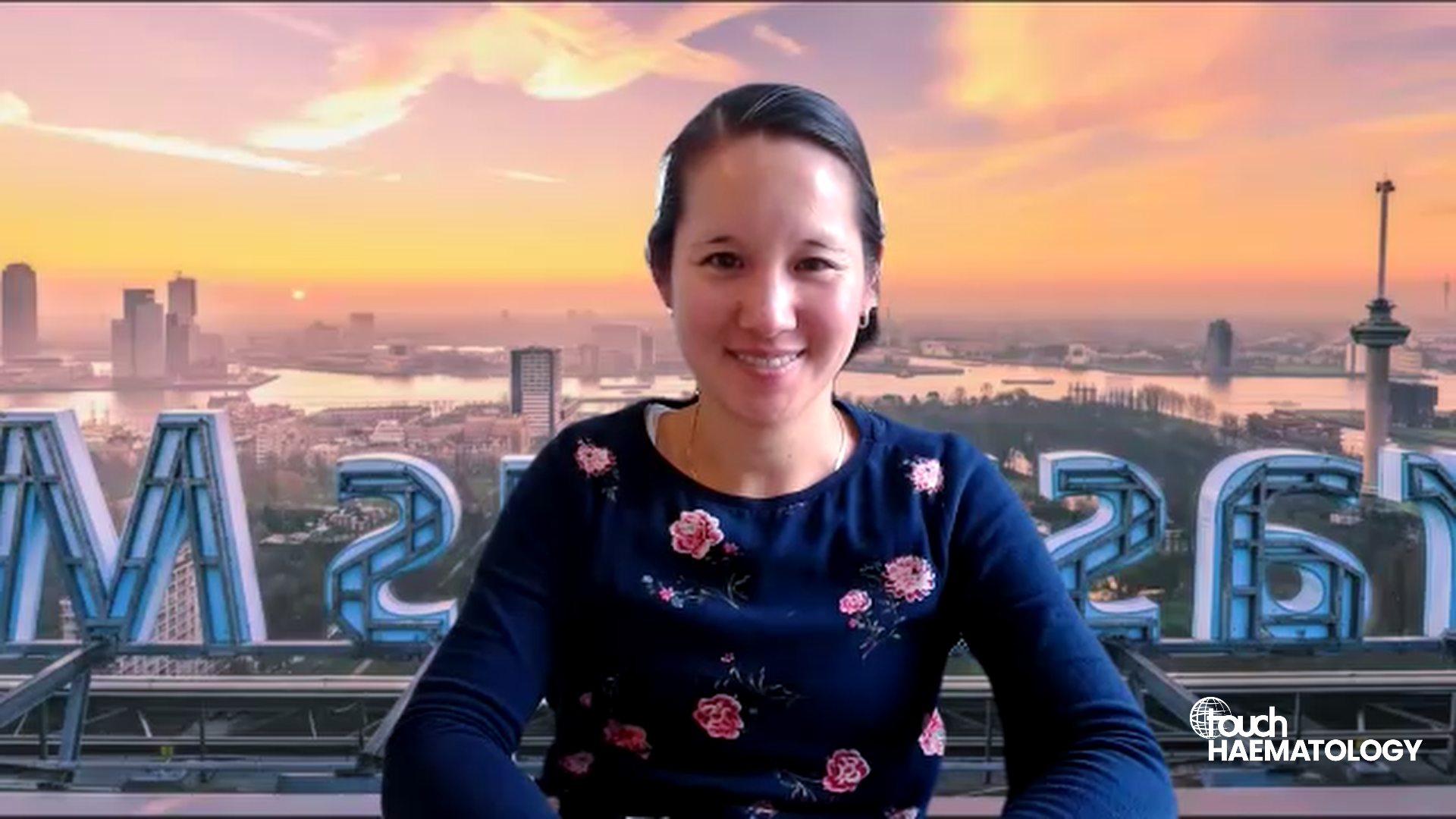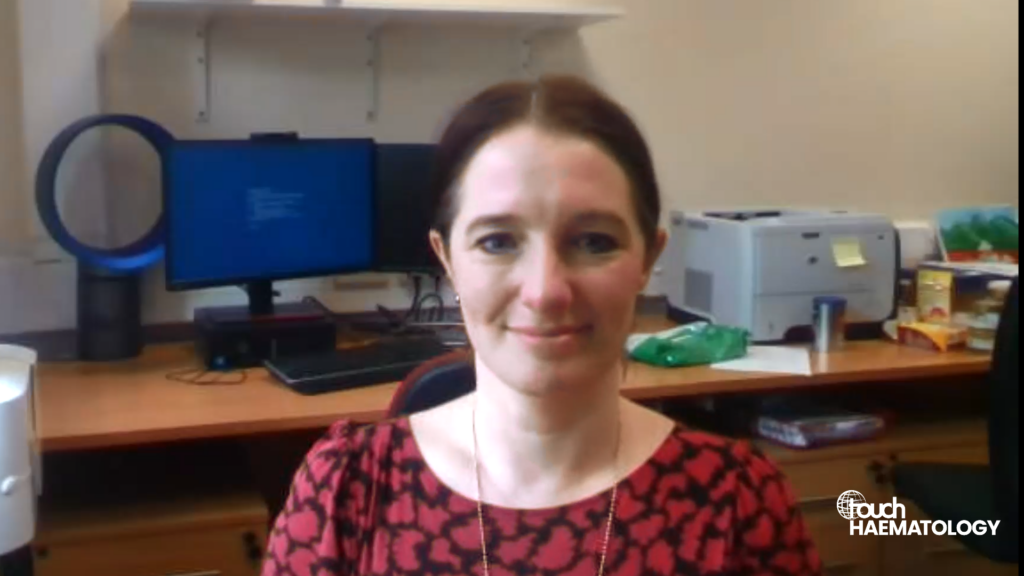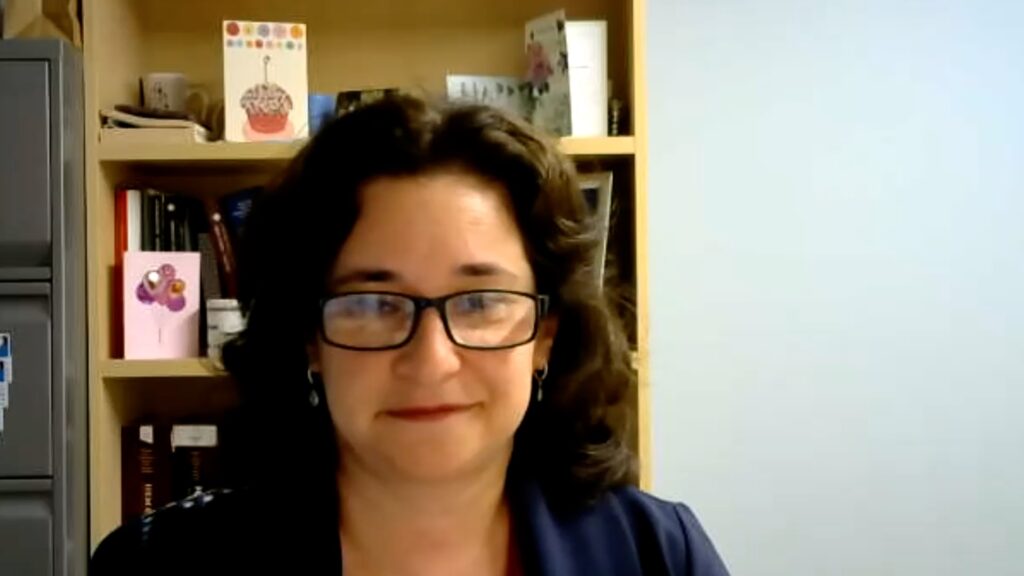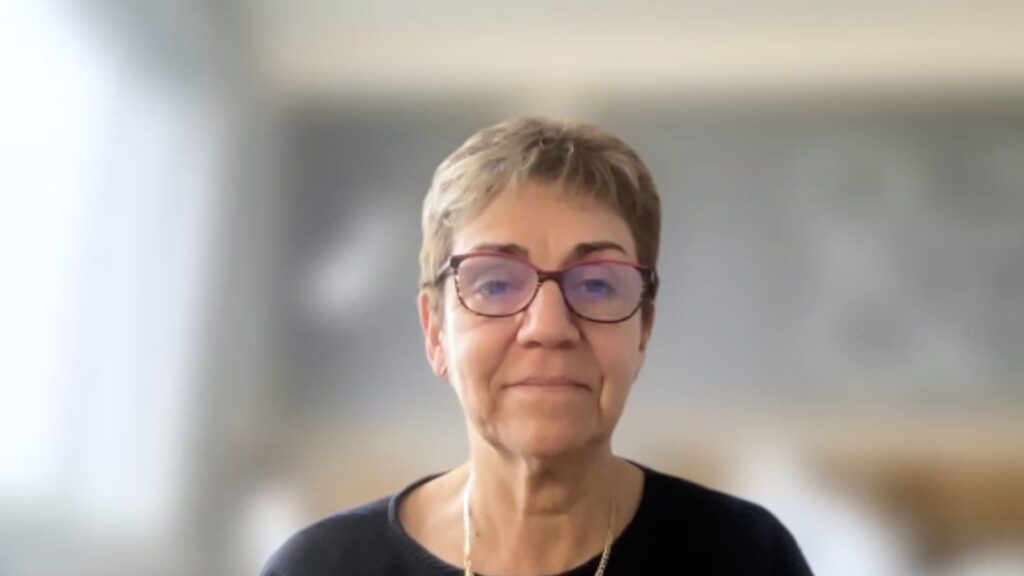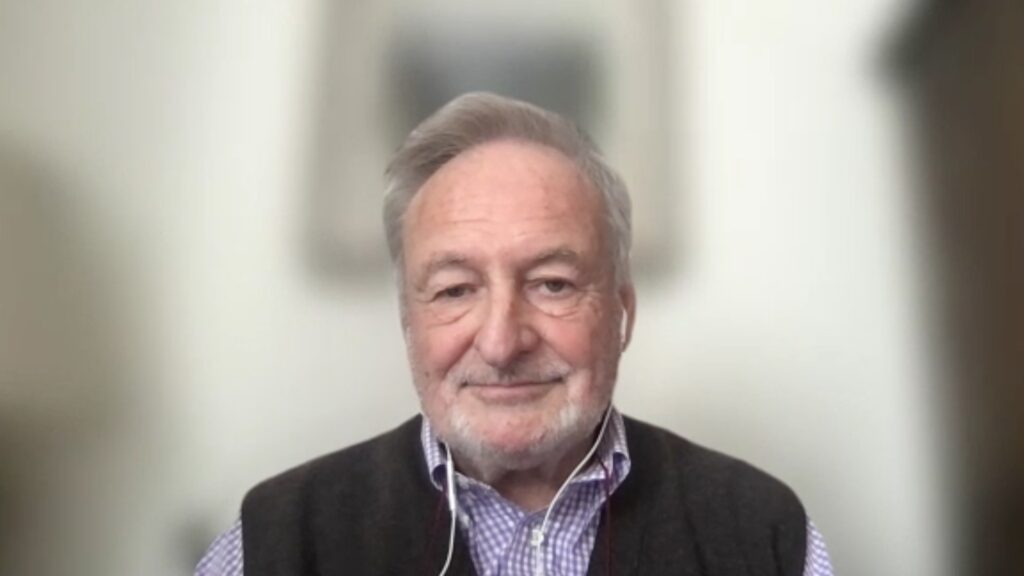The phase II MANIFEST trial (NCT02158858) investigated the use of pelabresib combined with ruxolitinib for patients with myelofibrosis who are JAK inhibitor treatment-naïve. We caught up with Dr John Mascarenhas (Icahn School of Medicine at Mount Sinai, NY, USA), one of our valued Editorial Board members, to discuss the latest durability of response and safety results from the MANIFEST trial.
The abstract entitled ‘UPDATED DURABILITY OF RESPONSE AND SAFETY IN MANIFEST ARM 3: PELABRESIB (CPI-0610) COMBINED WITH RUXOLITINIB FOR JAK INHIBITOR TREATMENT-NAÏVE PATIENTS WITH MYELOFIBROSIS’ (Abstract #P1027) was presented at the EHA 2023 Congress, 8–11 and 14–15 June 2023.
Questions:
- What have previous clinical trials taught us about JAK inhibitor treatment for myelofibrosis? (0:12)
- Who is likely to benefit most from this treatment and in whom is it contraindicated? (2:01)
- What do the recent results from the phase II MANIFEST trial tell us about the durability of response and safety in pelabresib combined with ruxolitinib for JAK inhibitor treatment-naïve patients with myelofibrosis? (3:35)
Disclosures: John Mascarenhas discloses consultancy for Novartis, Incyte, CT Bio, Kartos, Karyopharm, Celgene/BMSRoche, Imago, GSK, Pfizer, AbbVie, MorphoSys and Geron, grant/research support from Geron, Incyte, CTI, AbbVie, Celgene/BMS, Novartis, PharmaEssentia and Karyopharm, and is on the advisory board for Incyte, Morphosys, CTI, Geron, BMS, Imago and Galecto.
Support: Interview and filming supported by Touch Medical Media. Interview conducted by Lisa Glass.
Filmed as a highlight of EHA 2023.
Transcript
My name is John Mascarenhas. I am a Professor of Medicine at the Icahn School of Medicine at Mount Sinai, New York City.
What have previous clinical trials taught us about JAK inhibitor treatment for myelofibrosis? (0:12)
I think we’ve learned collectively from the JAK inhibitors that have been studied that these drugs are very effective in reducing this oncogenic signaling pathway, JAK-STAT, which is central to the theme of the disease, and that affords spleen and symptom benefit. And I do think it affords survival benefit too, I should point out. So I do think that there’s a modest improvement in survival if you give a JAK inhibitor to patients with myelofibrosis versus don’t give them a JAK inhibitor, give them an alternative agent like a non-specific chemotherapeutic, like hydroxyurea. So I do think that there is a benefit that’s deeper than spleen and symptom. It’s just not sufficient. So the median time of the discontinuation of ruxolitinib is 3 years. If you discontinue ruxolitinib the median survival is only about a year, a year and a half. So there’s really an unmet need to be able to deliver deeper responses upfront and salvage patients who lose initial response. So JAK inhibitor-based combinations is really where the field has moved to, and that highlights drugs like navitoclax, the Bcl-2/XL inhibitor, or pelabresib, the pan-BET inhibitor. Parsaclicib was a PI3 kinase inhibitor that had rationale that recently failed interim analysis that’s not moving forward. And then navtemadlin, the MDM2 inhibitor, and adding on to ruxolitinib, and then more recently, earlier on in development, which is now moving forward in an accelerated fashion is selinexor, the exportin 1 inhibitor. So it’s exciting to see these rationally designed mechanism-based therapeutics move forward in combination with ruxolitinib, where their synergy, evidence of preclinical synergy, which we’re hoping will translate into deeper clinical responses with higher durability of response and better outcomes like survival.
Who is likely to benefit most from this treatment and in whom is it contraindicated? (2:01)
Well, I think everyone is, you know, for most patients are likely to benefit from these advances. So, you know, for example pelabresib, which has had excellent results in the phase 2 setting, both, modest results I would say as a single agent in the relapsed/refractory JAK inhibitor setting, better results in terms of salvagers or salvaging suboptimal response. And then the best results in combination with ruxolitinib upfront in the JAK inhibitor naive patient population. So one could see a drug like pelabresib really start to fill a niche, improving upon responses early on and even salvaging responses as a second line add-on therapy. So, you know, to answer the question, I think that there’s a large group of patients that can benefit from therapies like pelabresib in which right now there’s not a clear clinical signature or phenotype that would say, well, these patients are ideal for pelabresib and these aren’t. I mean, that is I think something important to look at, for example, in the phase 3 setting is can we decipher which patients are optimal for a treatment like pelabresib versus maybe optimal for treatment like Bcl-2/XL inhibitor navitoclax. One could envision, you know, and I don’t know whether we’ll be able to do this, but one could envision, you know, clinical and molecular signatures that help direct us into different avenues of therapy. That does not exist right now. But that’s a possibility for the future.
What do the recent results from the phase II MANIFEST trial tell us about the durability of response and safety in pelabresib combined with ruxolitinib for JAK inhibitor treatment-naive patients with myelofibrosis? (3:35)
The MANIFEST study is a phase 2 study. It has multiple arms. The first arm is single agent therapy in the patient population that is relapsed or refractory from ruxolitinib. Second arm is those patients who have a suboptimal response to ruxolitinib in which you add on pelabresib to ruxolitinib. And then the third arm, which is the arm that moved forward into the phase 3 testing, is the combination of ruxolitinib and pelabresib in JAK inhibitor naive patients. And then what we saw there is significant spleen response, 68%, SVR35, 57% TSS50. These appear to be higher than historic trials of, prospective trials of ruxolitinib. So the idea is that we’re getting deeper spleen responses, perhaps it improves symptom responses. I think what it’s gonna be and there’s a lot of other interesting correlatives that go along that, you know, more significant bone marrow fibrosis reduction, driver allele reduction, clear inflammatory cytokine reduction. There are some interesting innovative biomarkers that have been evaluated and presented at ASH 2022, for example, increasing distancing of megakaryocytes, a phenomenon called the clustering of megakaryocytes as a biomarker that may link to clinical activity. So we’ve learned a lot from that phase 2 study in the combination setting upfront JAK inhibitor naive space. We’re trying to change the paradigm from one of sequential monotherapy, which is really what has and are predominated to even combination therapies upfront, but the most important secondary endpoint in the ongoing phase 3 study, which, of course, we don’t have information on yet and is gonna read out the latter part of 2023, and this is a study of JAK inhibitor naive patients who have intermittent high risk disease in need of therapy, randomized to either rux plus placebo or rux plus pelabresib at a dose of 125 milligrams, two weeks on, one week off, so three week cycle. And the primary endpoint is SVR35 at 24 weeks, and TSS50 at 24 weeks is the secondary endpoint, but one of the embedded secondary endpoints, which I think is really important is durability of response. I think if we can demonstrate that there is a meaningful increase in durability of response, with the combination, that really becomes for me, you know, a very big settling point for moving the combination approach early on in the disease.
Subtitles and transcript are autogenerated

